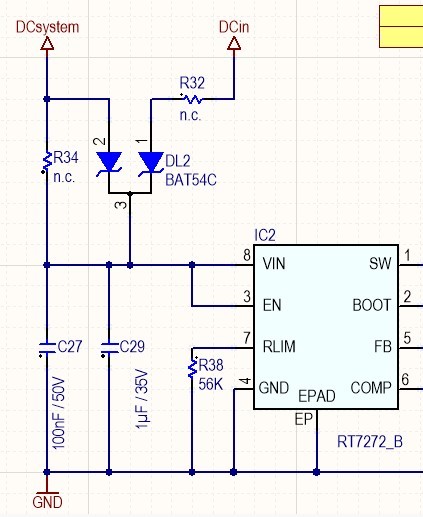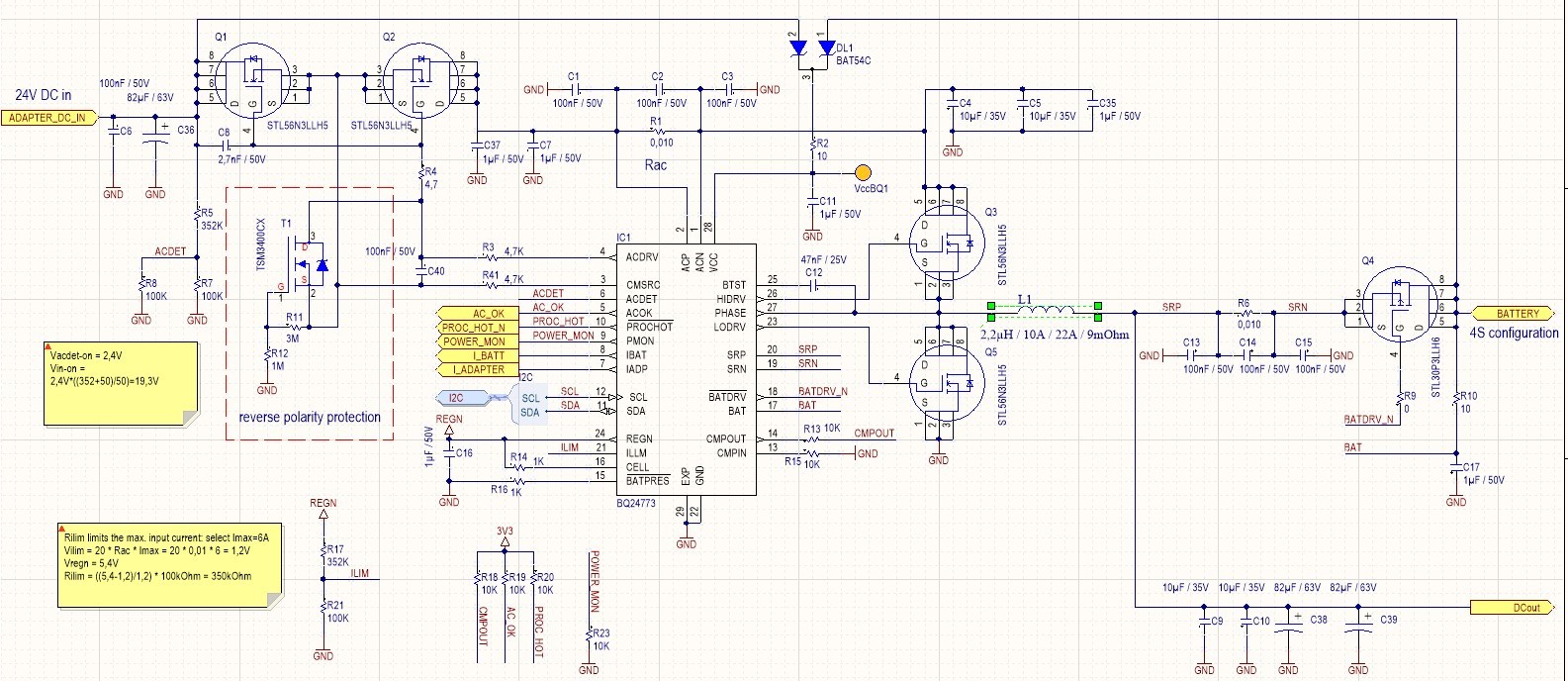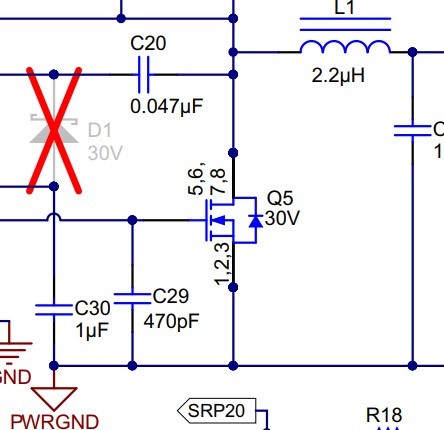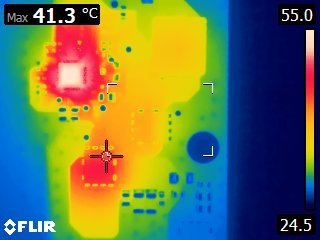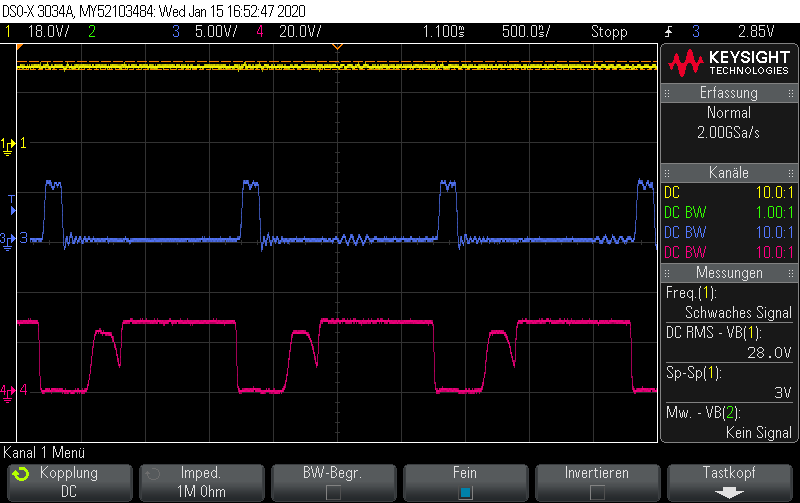Hello,
we have a battery charger designed around the bq24773. Some design points:
- DC input voltage from the AC adapter is 24V, max 6A.
- The battery pack is 4S (4.2V max per cell), max charging voltage set to 16.8V, max charging current is 6A.
- To minimize switching losses, we choose 600kHz mode in software.
- AC-DET divider is set to turn on at 19.3V
- Maybe I want to upgrade to 8A charging current
Issue: If there is no battery pack connected, the system voltage (Vsys in the EVM schematic) will not always turn on. Same happens if the battery pack is completely empty. Our workaround is to feed DC in directly to our DC/DC for the MCU:
Question 1: Works fine, but I'd like to understand why the bq24773 won't work without battery pack. Should it work?
Tuning. For our prototype we used STN56N3LLH5 (N-channel 30 V, 0.0076 Ω typ., 56 A, 6.5nC, Vgsth 2.5V) and STL30P3LLH6 (P-channel 30 V, 0.024 Ω typ., 9 A), inductor is Würth 74437358022 (2,2µH / 10A / 22A / 9mOhm). I want to replace those three components on the next board. Here is the current schematic:
I assume that Q1, Q2 and Q4 are used as switches only, so I'd replace them with MOSFETs with a very low Rdson. For the P-MOSFET maybe a type which can handle a higher current if I want to upgrade to 8A.
I forgot the 10uF on the battery side (C23 in the EVM) that was added as a fix on the board.
Question 2: For Q3 and Q5 I'd choose a MOSFET with a low gate charge first, then a low Rdson next. Is that correct?
Question 3:The EVM scematic has 470pF (C29) on the gate of the low side FET. Why? The schematic in the datasheet does not mention this capacitor.
When running with a very small charging current (64mA) the bq24773 is the only heat source:
Question 4: Can we do something to reduce the heat generated by the bq24773? Maybe add resistors (10 Ohm?) to the HIDRV/LODRV pins?
These are the two gate drive signals:
Channel 1: battery current, channel 3: low side mosfet gate drive (LODRV), channel 4: high side mosfet gate drive (HIDRV).
Question 5: Why does the HIDRV signal have this dip? Is it expected? Does is afftect the efficiency? Is my BTST capacitor too small?
At low currents (<1A) we have an efficiency of 92%, higher current still 90% but above 4A it drops below 90%. At 100-120W 10% heat dissipation is quite a lot, so every hint to improve efficiency is welcome.
Best regards,
Lo


